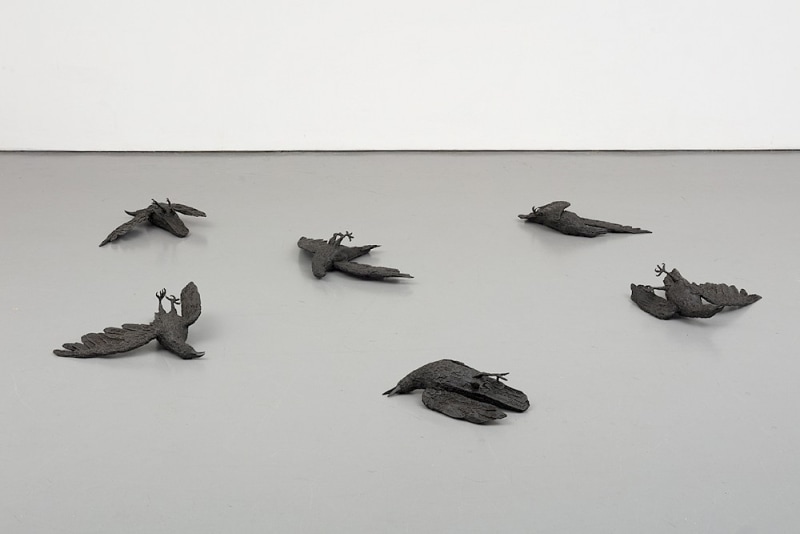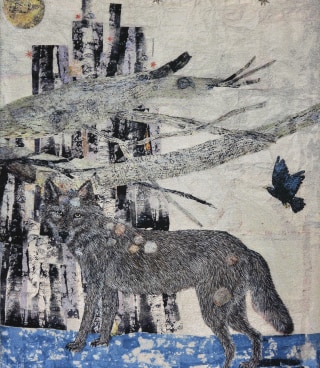When Kiki Smith saw the collection of her own work from the 1990s put together by Timothy Taylor gallery for a retrospective, she experienced what she called a “lesson in self-acceptance.” The artist had spent the decade mourning those taken by AIDS, including her sister, Bebe, and filling her days with work. “A lot of the time you’re making things because you have weird little niches of interest. All of them are made out of some sort of strange earnestness, in moments of trying to discover,” Smith said. She had been trying to discover in what seems like every medium: drawings and lithographs; ceramics, bronze and papier-mâché; and even photography, including a famous self-portrait snapped with a camera designed for geological surveys (“My Blue Lake,” 1994). But as Smith, now 68, looked over what had felt, at the time, like a variety of disparate discoveries, she saw a through line: “There are a lot of heads, and a lot of birds.” The heads include “Untitled (Ear Ache)” (1991), a papier-mâché that reveals Smith’s obsession with the grosser aspects of our bodies and influenced the direction of figurative art, while the glowering head in “Las Animas” (1997), a collage of photographs she took of her own veins and scars, shows her unflagging feminist stance. The birds include a bronze series of mythical creatures in “Harpies” (2000), and the moving “Six Crows” (1995), in which dark bronze crows are strewn across a gallery floor, apparently felled in midflight. It seems to speak both to AIDS and to Covid-19 though, Smith clarifies, that wasn’t why she made them. Not that it matters: “It makes me have faith in my work: that I just follow and go where it goes.”
Going Back to the ’90s With the Artist Kiki Smith, Kiki Smith
The New York Times, 18 September 2022

